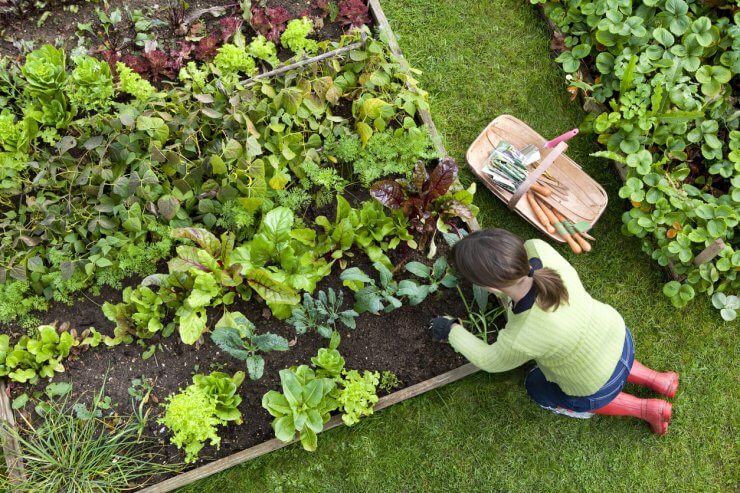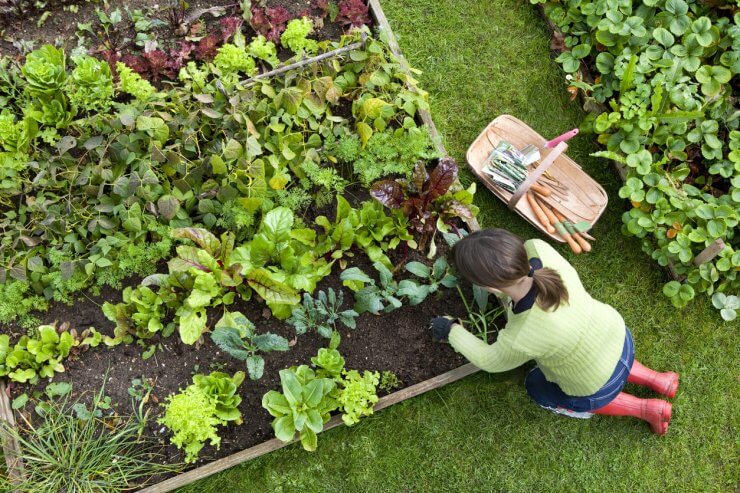
The best bit of advice I have learned about garden planning is to group your vegetables and herbs together that have similar watering and light requirements. Generally, when we envision ideas for a raised bed vegetable garden layout, we might be tempted to put vegetables where we think they’ll look best, or simply fit best, but experienced gardeners spend early spring planning their gardens for a good reason, so let’s get into all the things to consider before you build your beds and lay them out.
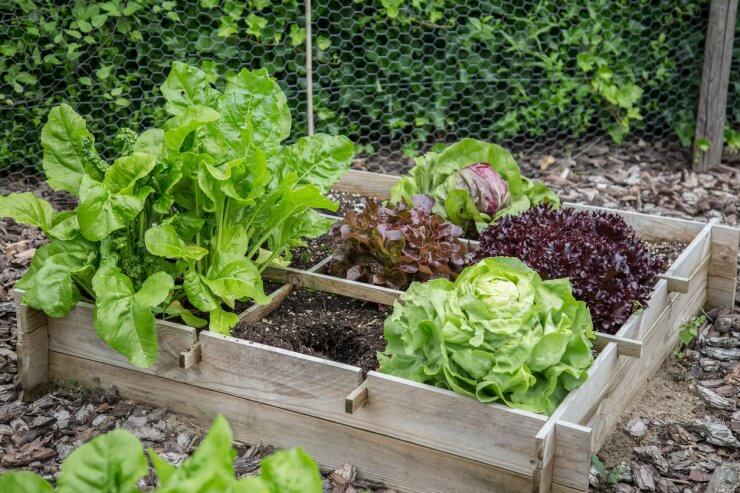
- Pick Plants that Make Good Roommates
One reason why the pros spend so much time planning is because there are such things as incompatible plants—like their moon signs are polar opposites and you definitely shouldn’t ask them to share an apartment. Have you ever had a toxic roommate? Some vegetables are considered allelopathic, meaning they may have either toxic behaviors or even chemicals that can harm plants around them, such as tomatoes, beans, beets, broccoli, cabbage, peas, and soybeans.
There are others that just don’t seem to get along, according to many gardeners. For example, dill and carrots, cabbage and strawberries, mint and asparagus, potatoes and tomatoes, or peppers and beans.
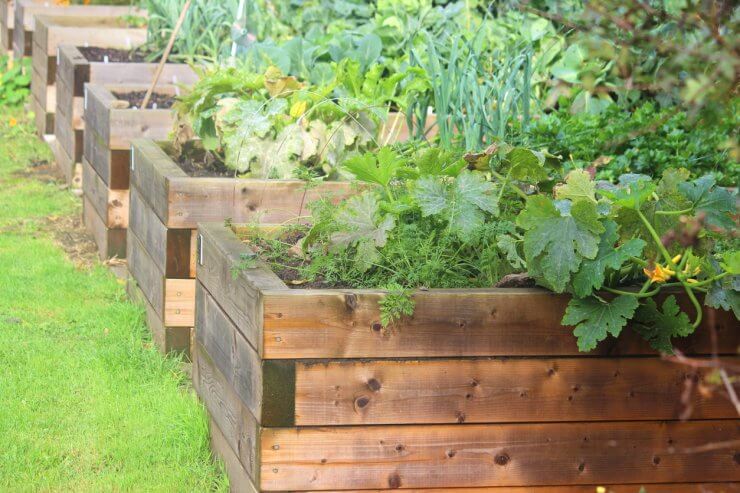
- Group Plants with Similar Light Requirements
Keeping everything above in mind, organize your sun-soaking plants together, and your shady plants together. Or, you can use your sun-loving plants to shade their more fair-skinned friends.
With enough foresight, you can also get creative by planting companion plants together. For example, if you plant carrots behind tomatoes, the tomatoes will shade the light for the carrots, who prefer shade. Corn and green beans, which have similar light requirements, also thrive together because you can allow the beans to use the corn stalks as a trellis, while the beans actually improve the soil for the corn too.

- Group Plants that Like/Dislike Water
This one is particularly important, as well as grouping veggies together that like a similar type of soil. Again, keeping the bad roommate situations above in mind, I like to organize my raised bed vegetable garden layout in a way where I can water one section at a time. I’m actually lucky enough that the home I bought had a built-in sprinkler system and I’ve been able to tinker with it to water different sections longer and shorter, but the same can be done with a hose.
Since I enjoy manually watering my garden, it’s helpful to separate the Pisces from the Aries in the garden so that everybody gets the water they want.
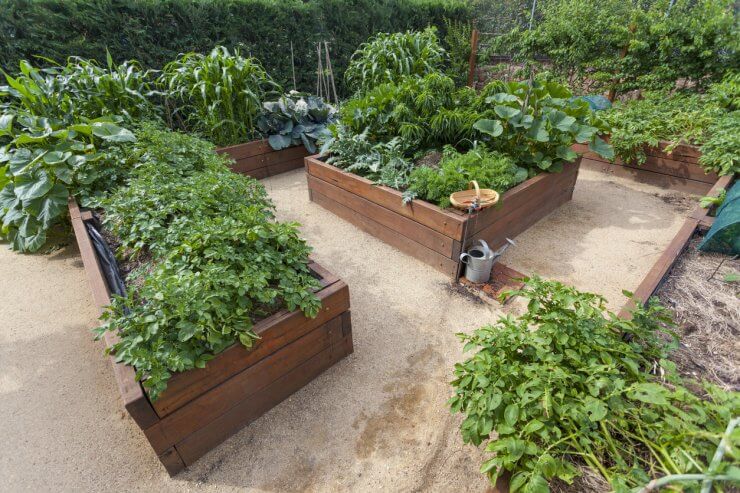
- Consider Your Back
If you don’t like bending over to weed your garden, you’re not alone. When thinking of your raised bed vegetable garden layout, think about how high you’ll want your raised beds to be.
I love this 32″ tall raised bed on Amazon
A good friend of mine who is quite pregnant, recently had her husband build some waist-high garden beds for her, so that she could still enjoy gardening without all the bending over, and it made me wish I had a full-sized waist-high garden myself! My body would probably argue that I could use the exercise, but it sure sounds nice, doesn’t it?
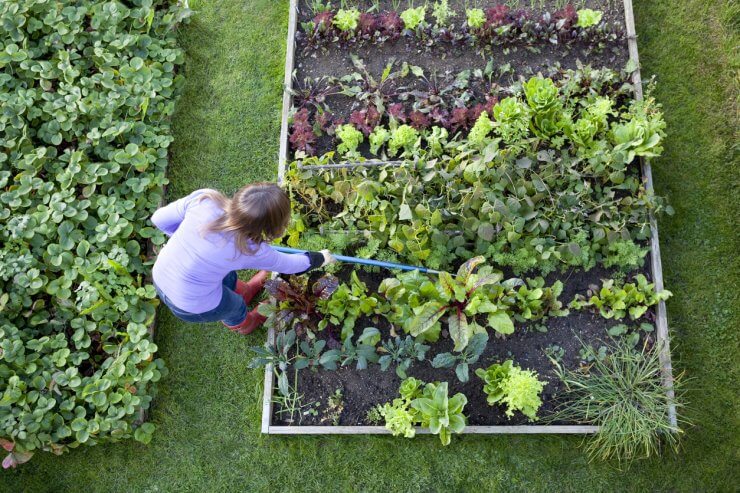
- Give Yourself Room
The benefits of building raised beds are mostly convenience. Less bending to weed, more organized plants, and spacing to move between your plants. The best raised bed vegetable garden layout generally has at least a 2 – 3 foot wide path between boxes, allowing you to crouch, harvest, and weed easily. Many gardeners prefer a stone or sand pathway that’s easy to maintain without using any chemicals to keep the weeds out.
However, if you don’t have the space or budget for that, you can easily do it with the lawn in between, just leave enough room for your lawnmower to move through. The grass clippings can actually make great mulch if it’s untreated.
If you have any other raised bed vegetable garden layout ideas, I’d love to hear them in the comments below. Getting personal anecdotes from other gardeners is my favorite part of this community!
Note: Food Gardening Network contains links to affiliate websites including Amazon and Rakuten Affiliate Network and we may receive a commission for any eligible purchases made by you through links on this page.
